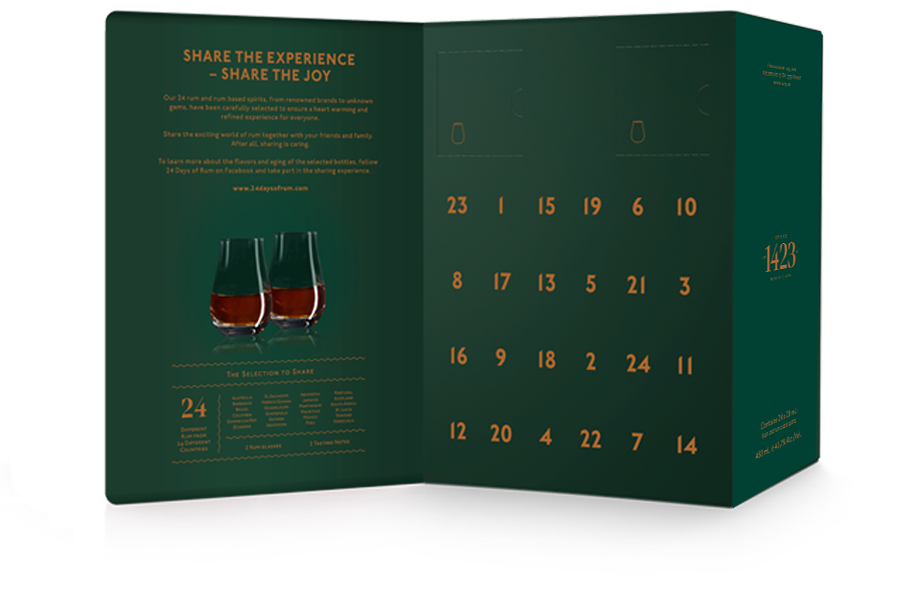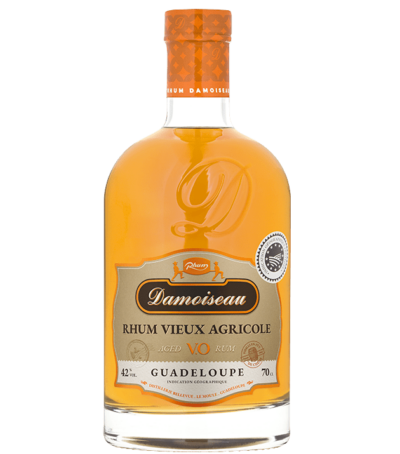In 1942, Roger Damoiseau senior – a former engineering graduate of the Institut Electrotechnique de Grenoble and the Institut Catholique d’Arts et Métiers – decided to purchase the Bellevue estate, which was derelict up to that point, but this came at the price of a heavy debt. The company resumed its business of producing sugar, making sweets and jams. Subsequently, rum would soon become the main focus of production. In 1968, Roger Damoiseau junior took over from his father and continued to develop the family business to the point of being able to pay off the company’s debt through bulk rum sales. His sons then began to work with him, helping him to make the distillery a successful business.
Craft agricole rhum since 1942
It was in 1995 that Roger handed over to Hervé Damoiseau who became the chairman, his brother Jean-Luc handling production. In 1978, Jean-Luc became a master distiller, and since then, their sister Sandrine Damoiseau has been promoting the brand through events.
The rum manufacturing process
Cutting and milling sugar cane
The cane harvest starts in late January at the earliest and can last up until July. The cane plants are cut into 50-cm lengths with a machine. The fresh cane is delivered to the distillery, where it is chopped up by two shredders. This fiberises the cane stems, which are further shredded and then milled. The juice (vesou in French) is collected at each stage and poured into a tank, where it will be pumped for filtration.
Fermentation
During the second stage – fermentation – the raw material is converted into alcohol by adding yeast. This is when the future rum acquires the characteristics that will give it its identity.
Distillation
The fermented liquid is then conveyed to the third stage, distillation. When heated, the water separates from the alcohol and the aromatic components it contains. The resultant rum generally has an alcohol by volume in the vicinity of 89%. Before being sold, it will be diluted with water to bring it down to the strength on the bottle (40%, 50% and 55% at Damoiseau).
Dilution
The rested rum is then pumped to one of the many stainless-steel tanks, where it will be diluted with reverse osmosis water. Despite the dilution, the rum is not yet ready for consumption – its bouquets are not yet being expressed. By placing it in a stainless-steel tank for a few months, the rum is said to become rounder, and its bouquet develops.
Ageing
Some of our rums are placed in large oak casks for a few months to create gold or amber rums. Our best batches are placed in oak barrels to age for several years, thus obtaining incomparable aged rums.
Tasting Notes:
Color: Amber
Nose: Aromas of dried fruit, citrus and spices
Palate: Delicate to start, developing into notes of citrus, dried fruit and spices


Très agréable en bouche Très parfumé Reste bien en bouche Doux en alcool Doux en bouche
En liten julig rom. Lite saffran i doften och torkad frukt i smaken. Liten finish
Quite delicate. Nice, but I prefer a richer flavour.
Real good
Tak toto mi fakt nebere
Unterer Durchschnitt!
It’s a ok rum, but not the best from this year collection.
La guadeloupe à l’honneur !! Subtil en bouche.
Very strong rum nice tasting with a heap of different spices gives a nice glow to the
Výborný, moje gusto 👍
Alcoholic, no rhum-taste
Ok líbí se mi, tohle můžu.
Docela dobrý.
Hrůza
Délicieux ! 😋
Yellow/amber rum with aroma and taste to citrus, spices and dried fruits. Not a complex rum, but you enjoy its flavor.
good
Lovely. Delicate fruity flavour
Nous aurions bien voulu le goûter mais erreur dans le calendrier nous avons 2 numéro 2 .!
Please send a message to marketing@1423.dk, and will we find a solution.